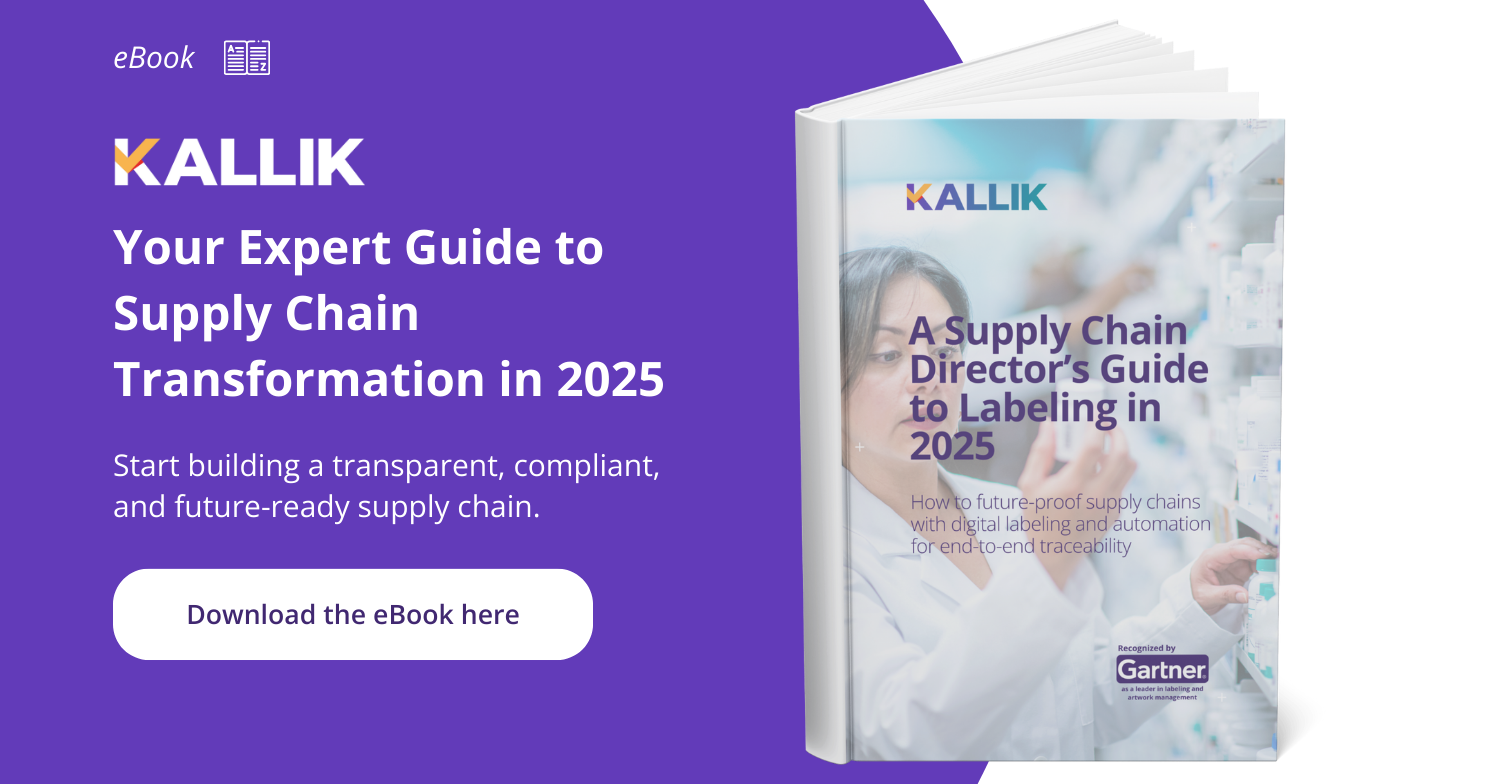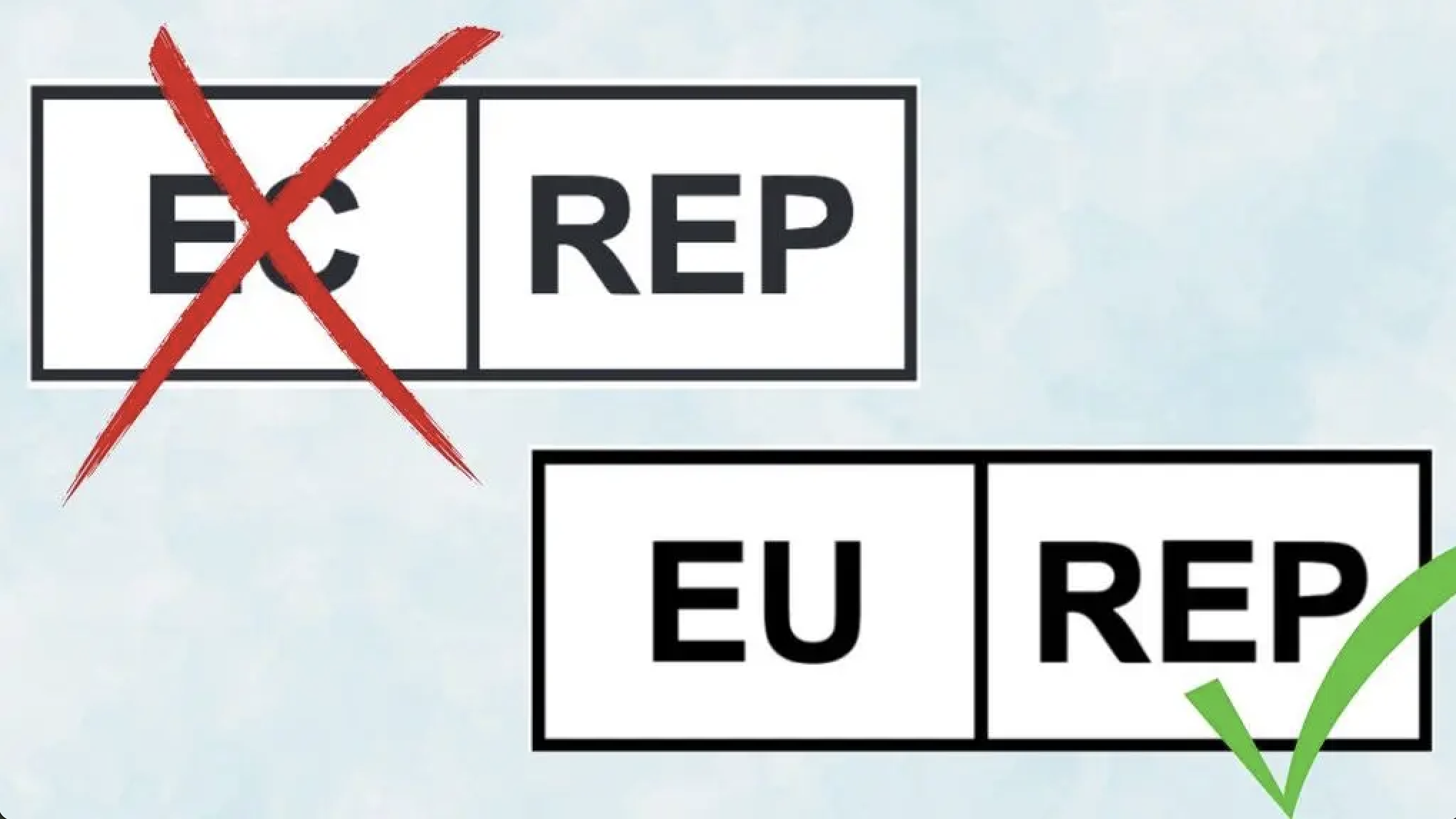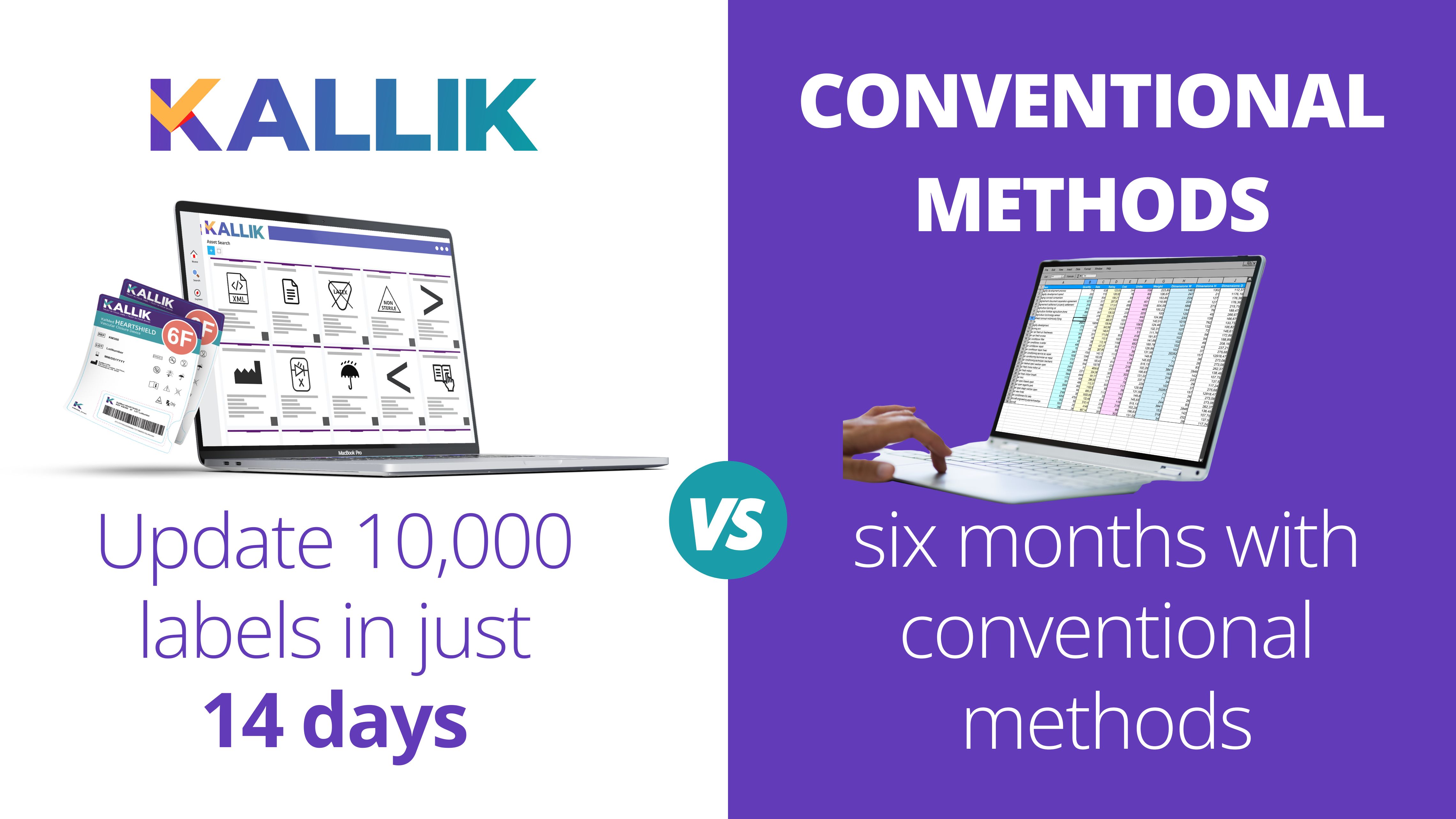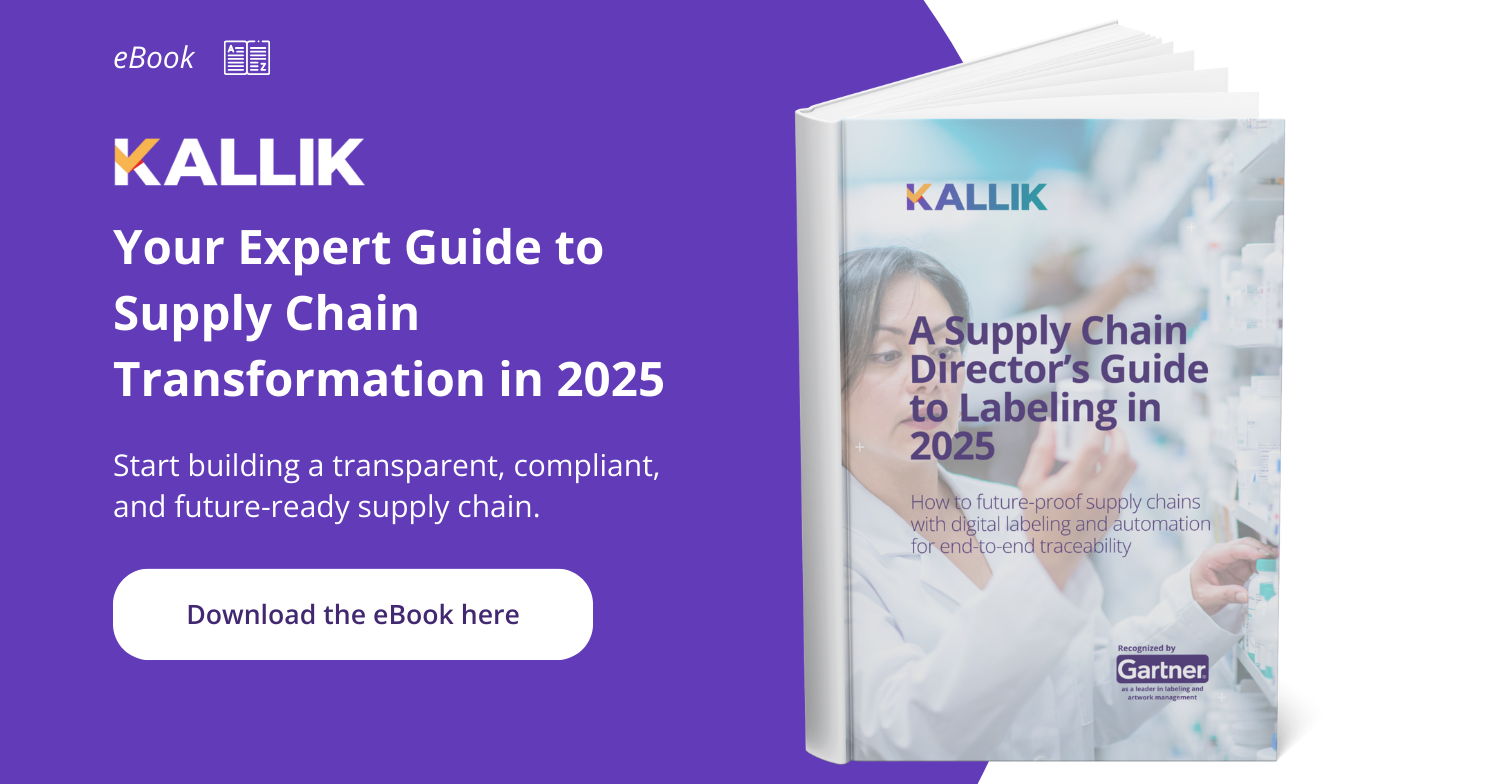In our Meet the Expert series, we shine a light on the people behind the technology – the experts driving innovation, transformation, and customer success at Kallik. This week, we sat down with Sharad Khusal, our Senior Vice President Sales – Americas, to talk about what drew him to the labeling and artwork industry, what trends he sees on the horizon, and what inspires him both inside and outside of work.
Sharad’s Introduction to Labeling and Artwork Management
In my previous role as the head of the Global Life Sciences business at DXC Technology, I had the opportunity to work closely with a range of partners and explore their solutions. That’s when I was introduced to Kallik. Their approach to labeling and artwork management really stood out, especially in how they were digitally transforming a space that hadn’t seen much innovation at the time.
What impressed me even more than the technology was the leadership team. Their collaborative mindset and commitment to solving truly complex challenges in the pharma and medical device industries resonated with me. So, when Kallik approached me about joining their team to support growth in the Americas, it felt like a natural next step. I was excited to be part of a company with such a forward-thinking vision and potential to make a real impact.
I’ve been involved in the labeling and artwork industry for over a decade, particularly in the context of life sciences. Throughout my career, I’ve built expertise in regulatory compliance, document control, submission management, and broader supply chain support – all within highly regulated environments like pharma and medical devices.
These experiences have helped me understand what businesses in this space truly need – whether it’s navigating compliance, accelerating speed-to-market, or creating more scalable and efficient processes. I bring that insight to the table to help customers overcome roadblocks and future-proof their operations.
The Challenges and Rewards of the Job
The job definitely isn’t without its challenges. A few years ago, I was managing a key account for a global pharmaceutical distributor in the U.S. We were gearing up for a major executive presentation, but the project was off-track and missing key milestones. I was brought in to assess and turn it around.
I quickly realized that the core issue wasn’t technical; it was down to collaboration and communication issues. As a result, I stepped in to take over the role, reset team expectations, and re-establish a collaborative environment.
We realigned on goals, clarified roles, and rebuilt trust, not just within the team, but with the client too. By focusing on open communication and unity, we delivered the final presentation on time. That experience reinforced for me how vital leadership and collaboration are in driving outcomes.
Despite the challenges that arise sometimes, it’s an extremely rewarding role thanks to the relationships. For me, I enjoy building strong, trust-based relationships with our customers. Throughout my career, I’ve always been in customer-facing roles, and I’m driven by helping clients solve real challenges, making their day-to-day work easier, more efficient, and more successful.
The most satisfying moments are when clients reach out to me for guidance on matters beyond the immediate scope of my role. That level of trust, when they see me not just as a vendor but as a strategic advisor, means I’ve earned a place as a true partner in their success. That’s what I strive for every day.
Staying Ahead of Industry Trends
The pace of change in our industry is only accelerating, especially across regulated sectors. Some of the major trends I see include:
Regulatory complexity: Global regulations like FDA, EMA, MDR, and UDI are evolving fast, and businesses need agile, audit-ready processes to keep up.
- Digital transformation & automation: Companies are moving away from manual processes and embracing cloud-based, AI-driven platforms to boost efficiency and reduce risk.
- Sustainability: ESG goals are pushing for eco-friendly labeling practices, like waste reduction and digital traceability.
- Globalization: Businesses need scalable solutions that work consistently across regions and can adapt quickly to supply chain shifts.
- On-demand, personalized labeling: Advances in digital printing are making real-time, market-specific labeling essential.
At Kallik, we’re staying ahead of these shifts by investing in cloud-native technology, AI, and automation. Our platform helps customers stay compliant, streamline operations, and reduce waste – all while scaling globally and adapting to what’s next.
What Sets Kallik Apart
Labeling is often overlooked, simply considered a downstream task–something to handle at the end of the product journey. But here at Kallik, we know that couldn’t be further from the truth! At Kallik, we know labeling is a critical control point that affects compliance, time-to-market, and even patient safety. At Kallik, we help organizations turn labeling from an operational risk into a strategic advantage.
In my view, what really sets Kallik apart is our ability to offer a true end-to-end solution that covers the entire labeling and artwork process in one unified platform, eliminating the need for multiple tools or applications. We also lead the way in composability, providing a level of modular, flexible configuration that even Gartner has recognized. Our AI-powered onboarding tool accelerates migration significantly, while our Where Used functionality enables customers to make bulk changes at scale, quickly and consistently. And as a cloud-native platform from day one, we bring over 20 years of cloud expertise—something most competitors are only just beginning to build.
What advice would you give to businesses looking to improve their labeling and artwork processes?
My biggest piece of advice is to look beyond isolated features. You need to think holistically: what will truly improve efficiency, scalability, and compliance over the long term? I’d also suggest choosing a vendor with proven cloud experience, strong security credentials, and an integrated platform that unites collaboration, content management, and compliance in one place. A piecemeal approach just won’t cut it in today’s regulated markets. That’s why I believe Kallik is the best choice, as we don’t just help global businesses fix their labeling challenges, but also evolve their processes for the future.
Sharad Outside of Kallik
Outside of work, I enjoy listening to music, watching films, and taking long walks in the park – all great ways to reflect and reset. I also love spending time with my son, especially when we go go-kart racing or play pool together. It’s a fun way to stay active and connected.
One thing that might surprise people is that I used to be a goalkeeper on my high school soccer team – and I still enjoy playing and watching soccer today.
What Inspires Sharad?
Some things that have always stuck with me are from my father and teachers: “Never give up” and “Keep on striving.” Simple, but powerful. Another one I live by is the idea of “living a rich life now and a richer life in the future.” It’s about embracing growth and resilience and always aiming higher, both personally and professionally.
If I could have dinner with any celebrities, they’d be Mahatma Gandhi and Nelson Mandela. Their stories of resilience, patience, and nonviolent leadership are incredibly powerful. They didn’t just lead; they lived their values, even when the stakes were immense. During one of the most demanding periods of my life – working full time, travelling constantly, and pursuing an MBA – I found strength in their journeys. Their commitment to positive change continues to inspire me every day.
Speak to Sharad About Your Label and Artwork Process
Looking to improve your labeling and artwork management process? Why not chat to Sharad? Contact our experts by clicking here, emailing enquiries@kallik.com, or calling +44 (0) 1827 318100.




